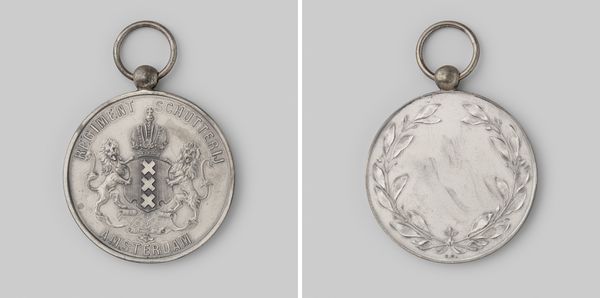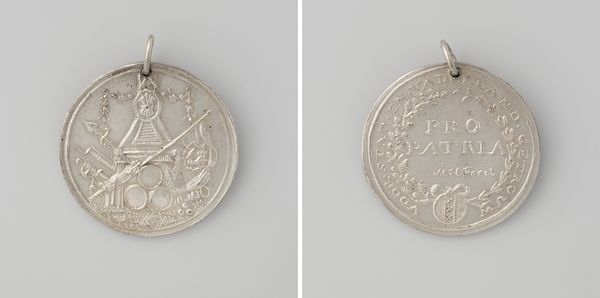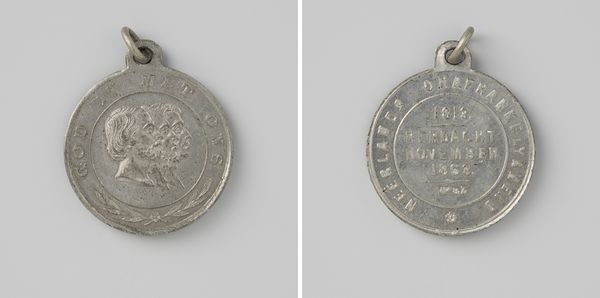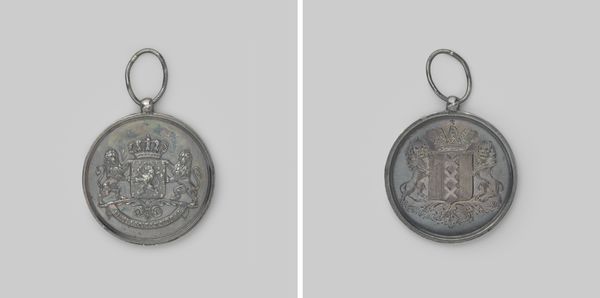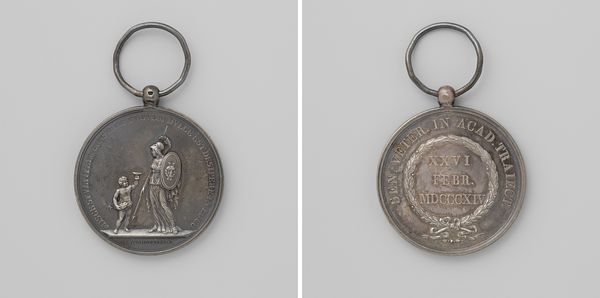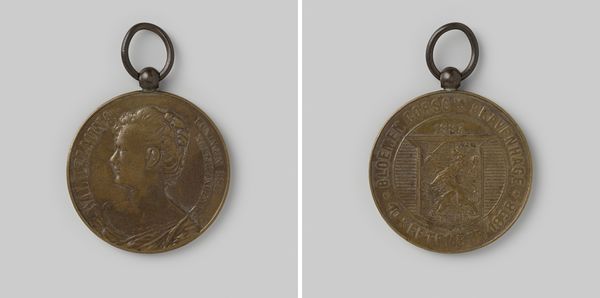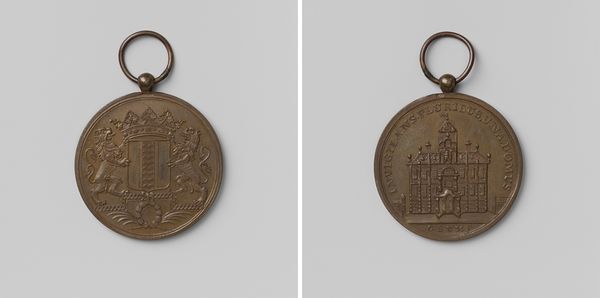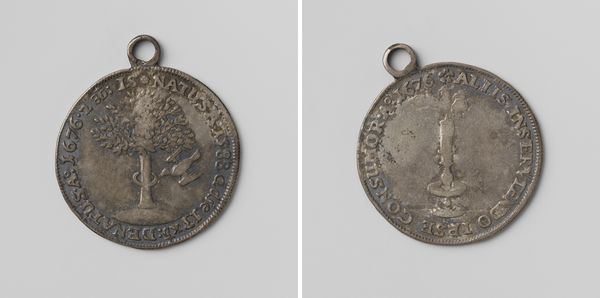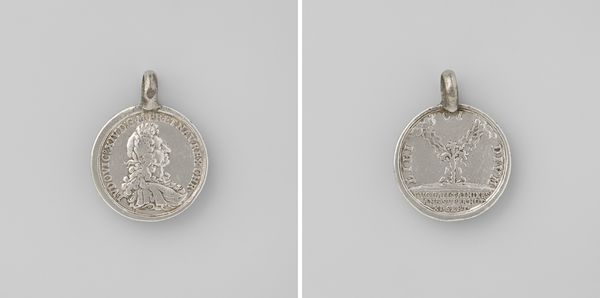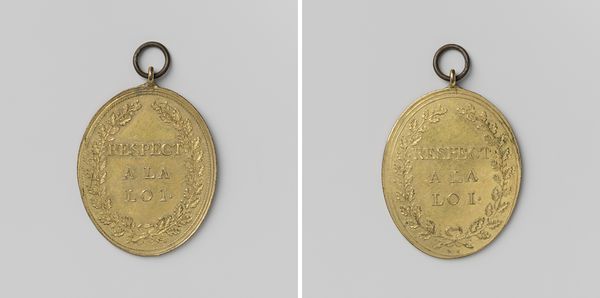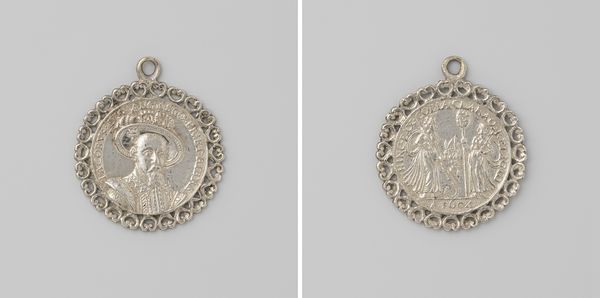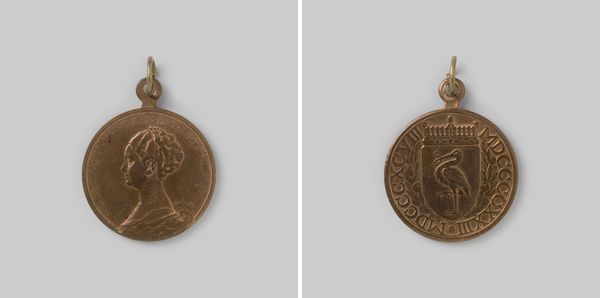
Vijftigjarig huwelijk van Keizer Wilhelm I en Keizerin Augusta van Duitsland 1879 1879
0:00
0:00
Dimensions: diameter 3.0 cm, height 3.5 cm, weight 9.31 gr
Copyright: Rijks Museum: Open Domain
Curator: Here we have a metal relief engraving by H. Weckwerth commemorating the fiftieth wedding anniversary of Kaiser Wilhelm I and Kaiserin Augusta of Germany in 1879. What strikes you first about it? Editor: It’s austere, isn’t it? That silver-toned metal gives it a sense of rigid formality, a controlled power. There’s not much softness here. It feels less celebratory and more like a political statement, which, let’s be real, royal unions always are. Curator: Indeed. The Neoclassical style, quite prominent here, was often employed to invoke a sense of historical legitimacy and imperial grandeur. Think about it—Wilhelm I sought to consolidate power and project an image of a unified Germany through such state-sponsored art. Editor: The profiles of Wilhelm and Augusta certainly emphasize that ideal of imperial power, but I can’t help but see the inequality embedded within that image, the implied roles assigned to each person based on gender. His profile is so much more pronounced than hers. Curator: That's a sharp observation. Weckwerth consciously modeled it on classical imperial portraiture to project authority. It was distributed at official court ceremonies, serving as a propaganda piece that cemented the ruling family's place in German history. Editor: That’s it! We're looking at an object designed to legitimize a very particular kind of power—hereditary power—at a moment when social hierarchies were under enormous pressure. Every symbol, down to the laurel wreath on the reverse side, underscores that. The crown, specifically, signifies not just authority but a divinely sanctioned right to rule. Curator: Absolutely, it’s interesting to consider its original display context, too. Given the size, it likely would have been displayed or worn, prompting discussions and reinforcing those political ideas amongst various court circles. Editor: It’s so heavy with meaning—it speaks volumes about the use of art to perpetuate not just memories but ideologies. For me, it speaks to the enduring power dynamics encoded in even the smallest of objects. Curator: From my point of view, examining such an artwork compels us to look at the construction and maintenance of historical narratives. What stories do we tell ourselves and what purpose do they serve? Editor: Exactly, how do those stories impact issues of representation, gender, and class? The object becomes a space for understanding history, but also critiquing how that history gets used.
Comments
No comments
Be the first to comment and join the conversation on the ultimate creative platform.
